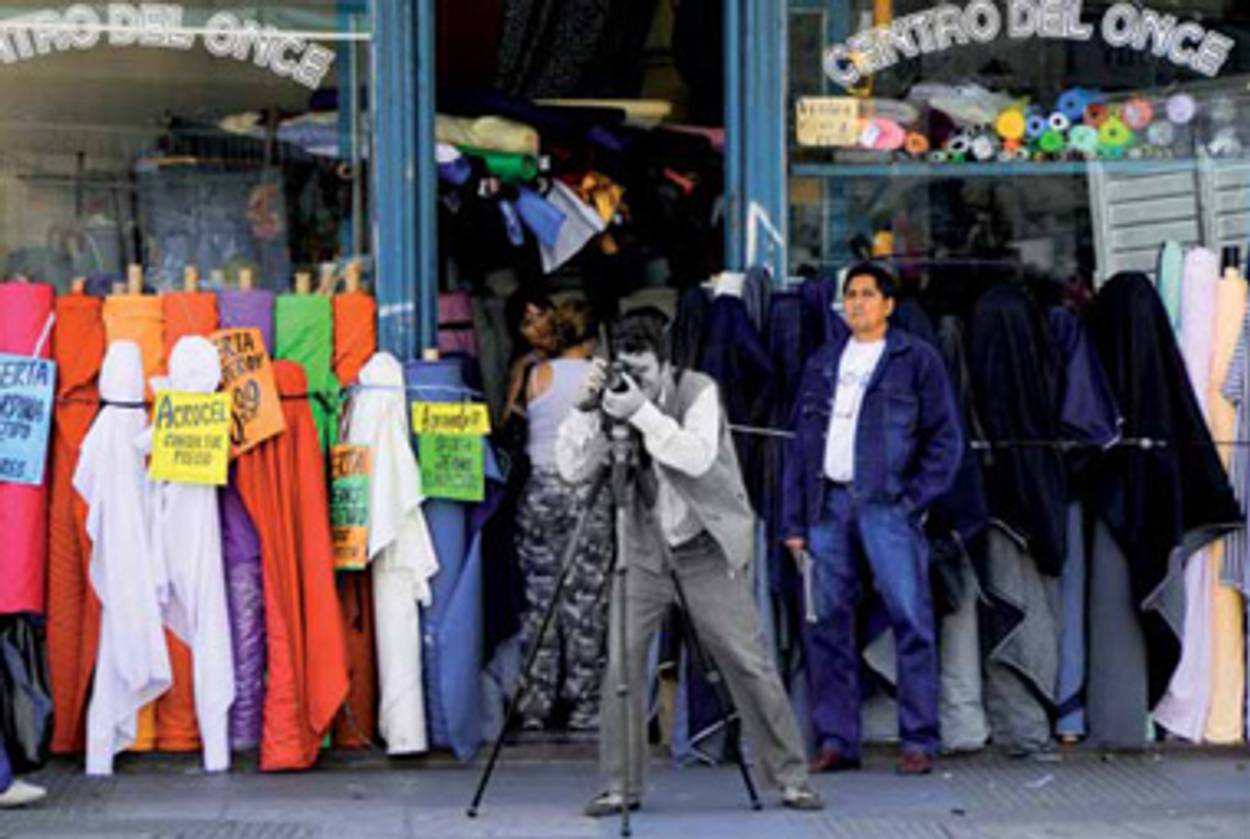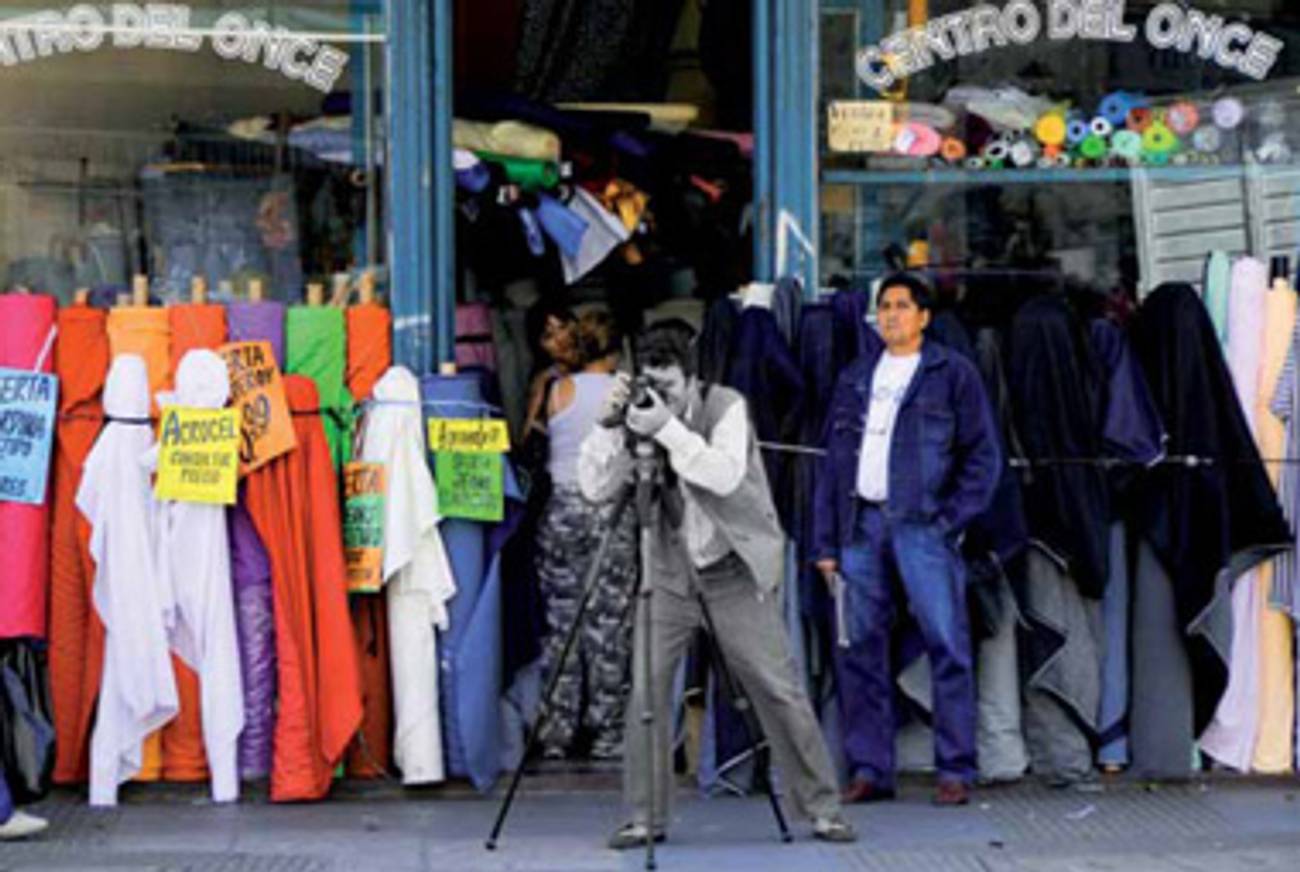Fresh Exposure
A new account of the 1994 attack on a Buenos Aires Jewish community center tells the story using a distinctly Latin American genre: the novel in photos, or fotonovela




As a boy growing up in Mexico City, Ilan Stavans came across a comic strip by Julio Cortázar, the Argentine author best known for his 1963 novel Hopscotch. The strip, about a superhero who battles big business, was for Stavans, today a professor of Latin American and Latino culture at Amherst College, a revelation—a mix of high and pop culture of the sort he has spent much of his academic career exploring. Among the hybrid genres Stavans has studied is the fotonovela, a comic book-like pamphlet that uses photographs instead of drawings. When Buenos Aires’ AMIA Jewish community center was bombed on July 18, 1994, Stavans, struck by the pictures of the attack he saw in newspapers, thought that the fotonovela would be an ideal genre for telling the story. The idea remained on the back burner for Stavans, the author of some 25 books including Resurrecting Hebrew from Nextbook Press, until he met Argentine photographer Marcelo Brodsky. Their joint project, Once@9:53am—which takes its name from the Buenos Aires Jewish enclave known as El Once and the exact time of the July 1994 explosion—is to be published in Argentina next month. A discussion of the project with Stavans, Brodsky and Joshua Ellison, editor of the journal Habitus, will be held on April 14 at the JCC in Manhattan. As he prepared for the book’s publication, Stavans chatted with Tablet Magazine’s Gabriel Sanders about fotonovelas, the cameo role Stavans plays in Once@9:53am, and the still-unfolding story of the 1994 attack.
Let’s first talk about the genre of the fotonovela. Does it always have the documentary character of Once@9:53am? Is it always grounded in real events?
Not at all. The fotonovela in the Spanish-speaking world is an escapist artifact. It delves into lurid themes and melodrama, much like your average telenovela. Its hallmarks are desire and sexual innuendo, class differences, violence physical and psychological. The attempt in Once@9:53am is to rescue the genre from the dogs, to make it historically conscious, and, also, to turn it into agitprop. The theme, as you know, is the terrorist attack on the AMIA Jewish community center in Buenos Aires. The narrative revolves around a freelance journalist assigned by Playboy magazine to do a photo-essay on El Once, the neighborhood in the Argentine capital where Jews and other immigrants first settled—a kind of Lower East Side. As it turns out, something more than the usual rhythms of life play out that morning and the camera is there to serve as witness.
Your role in the fotonovela is not just as creator but as the character Rabbi Stavchansky. Your father is an actor. Was putting on a fake beard and using the unshortened form of your last name a way of getting in tune with the “family business”—or maybe a way of experiencing a rabbinical “road not taken”?
You put it better than I ever could. I’m not only a crypto-actor, I’m also a lapsed rabbi, or maybe an anti-rabbi. By the way, my father acted in several fotonovelas. The idea for this one took root after I stumbled over a copy in my family home in Mexico City.
The fotonovela pretty much ends with the explosion, but what can you say about its aftermath? Was it, for Buenos Aires’ Jews, what 9/11 was for New York? Come to think of it, did 9/11 alter or recast the way in which the citizens of El Once regarded their attack?
The aftermath of the AMIA attack is a long and twisted one. Iran seems to have been behind it. Argentina’s then president, Carlos Saúl Menem, who is of Lebanese descent, built an elaborate cover-up. The incident at the heart of Once@9:53am was indeed analogous to 9/11. It was perceived not only as an assault on El Once but on Argentina in general. It was a strike against the very concept of what it means to be a citizen of modern Latin America. On that morning, the region was touched by the Middle East as never before; the entire Spanish-speaking world was made aware of its vulnerabilities. Today the AMIA building has tight security. There are concrete barriers on the street. No photographs of it are allowed. That, in and of itself, is a metaphor for Jewish identity in Latin America today.
To download an excerpt from Once@9:53am, click on the picture below.
From the editors at Tablet Magazine